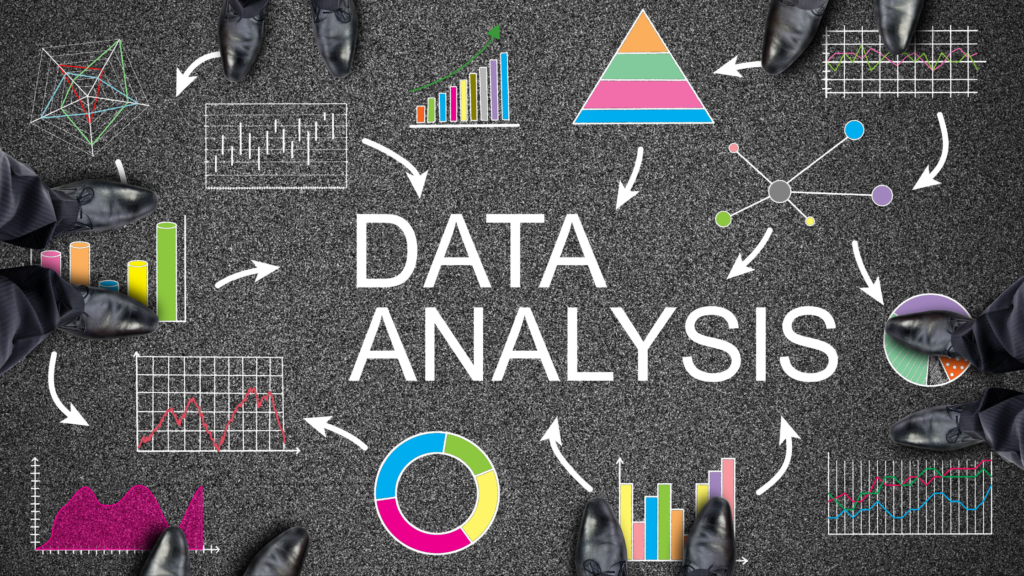Transform Your Data Skills with Scikit-Learn
Welcome to this edition of Data Science Demystified. In this issue, we will explore the complex universe of data analysis, data visualization and machine learning with Scikit-Learn. The goal is to present useful information, useful tips, and interesting news in the sphere of data science for both professionals and beginners in data analysis. Welcome to this course where you will be privileged to discover some of the most significant tools and techniques that will shape the future of technology and business.
Table of Contents
A Deep Dive into Analysis, Visualization, and Machine Learning
Data science is an interdisciplinary area of knowledge that comprises of many areas of specialization including statistical analysis, data visualization or creating complex AI systems. This is where Scikit-Learn proves to be an asset as a part of the Python programming language that enables these tasks to be done. In this comprehensive tutorial you will see how Scikit-Learn can turn raw data into useful information. It is done by conducting data analysis and then data visualizations and making excellent predictions on other datasets using well-developed algorithms for training machine learning models with such datasets.
Data Analysis with Scikit-Learn
Data analysis is the process of deriving useful information from raw data which is among the first few stages of data science. Many tools are available in this context which is a robust Python library called Scikit-Learn. Data analysis is paramount when it comes to doing any data science project. This entails understanding, cleaning and preparing data for further processing. Scikit-learn has several tools that help ease this task easily.
By utilizing all the below mentioned tools and techniques, Scikit-Learn facilitates a comprehensive approach to data analysis, enabling data scientists to transform raw data into actionable insights effectively.
Loading Data
Loading of data is made seamless with Scikit-Learn’s built-in datasets such as Iris, Wine, and Boston Housing – first and foremost. These datasets are ideal for trying out algorithms or getting a good score on benchmarks during practice. By integrating with Pandas, Scikit-Learn lets you effortlessly manipulate and convert various formats of data.
As far as practice goes, Scikit-Learn has several datasets such as the Iris dataset, Wine dataset, and Boston Housing dataset among others. All you have to do is use pandas to load your own dataset in a format compatible with scikit-learn functions. For example, one can load their dataset into pandas DataFrame then convert it into numpy, which could be used in scikit-learn.
from sklearn import datasets
import pandas as pd
iris = datasets.load_iris()
df = pd.DataFrame(data=iris.data, columns=iris.feature_names) Data Preprocessing
It is very essential to preprocess the data during data analysis. This encompasses cleansing data, missing value handling and feature scaling. For example, Scikit-Learn has modules for preprocessing that are useful in handling missing values, scaling features and encoding categorical variables.
Scikit-Learn’s SimpleImputer can be employed to replace the missing values with mean, median or any other strategy. Furthermore, StandardScaler will help by standardizing features around zero by removing the mean and scaling them for unit variance:
from sklearn.preprocessing import StandardScaler, OneHotEncoder
from sklearn.impute import SimpleImputer
imputer = SimpleImputer(strategy='mean')
data_imputed = imputer.fit_transform(df)
scaler = StandardScaler()
data_scaled = scaler.fit_transform(data_imputed)Exploratory Data Analysis (EDA)
Exploratory Data Analysis (EDA) is a must-do in understanding the structure and characteristics of data. It is all about summarizing as well as visualizing data so about comprehending its structure and characteristics.
For instance, pair plots, histograms or correlation matrices reveal underlying patterns, trends and relations within the dataset. Thus, Seaborn and Matplotlib complement Scikit-Learn in visual EDA.
import seaborn as sns
import matplotlib.pyplot as plt
sns.pairplot(df)
plt.show()Feature Engineering
Feature engineering is a process of deriving features from the existing ones in order to enhance the performance of the model. Scikit-Learn’s PolynomialFeatures module can generate polynomial and interactive features, which can enhance the predictive power of the models.
from sklearn.preprocessing import PolynomialFeatures
poly = PolynomialFeatures(degree=2)
data_poly = poly.fit_transform(df)Data Visualization with Scikit-Learn and Matplotlib
Data visualization is one of the most important parts of data science because it can enlighten the audience with the help of easily understandable and visually pleasing graphics. Data analysis and presentation is an important part of business intelligence and is used to identify trends, patterns and outliers in data.
Despite the fact that Scikit-Learn is mainly a machine learning library, it is perfectly compatible with Matplotlib, which is a Python library that allows for creating static, animated, and interactive visualizations.
Histograms
Histograms and density plots are particularly useful when it comes to the identification of the distribution of points within the different features. For example, using Matplotlib, you can create histograms to visualize the distribution of each feature in a dataset.
df.hist(bins=20, figsize=(10, 5))
plt.show()Scatter Plots
The other graphical method used in the analysis of relationships between two variables is the scatter plots. They assist in the identification of trends, relations and anomalies. For instance, you can plot the relationship between sepal length and sepal width in the Iris dataset.
plt.scatter(df['sepal length (cm)'], df['sepal width (cm)'])
plt.xlabel('Sepal Length')
plt.ylabel('Sepal Width')
plt.show()Heatmaps
Correlations are especially well illustrated on heat maps. Thus, through variations in color, heatmaps help to quickly determine the strength and direction of the relationships between multiple variables and their data values.
sns.heatmap(df.corr(), annot=True, cmap='coolwarm')
plt.show()Box Plots
Box plots are particularly useful when it comes to identifying outliers and the dispersion of data by categories. They show the data’s mean, variation, and asymmetry, which makes them suitable for comparing distributions.
sns.boxplot(data=df)
plt.show()Machine Learning with Scikit-Learn
Scikit-Learn is one of the most popular libraries for working with machine learning algorithms, which provides a wide range of tools for modeling and implementing machine learning. The API is easy to use and well-documented, making it convenient to work through all stages of the machine learning process, from choosing a model to adjusting it.
With the help of the below mentioned complete tools and techniques, Scikit-Learn provides data scientists the capabilities to construct effective and efficient machine learning models effectively. This balance between the simplicity of the learning algorithm and its processing capabilities makes Scikit-Learn an essential application in the data scientist’s arsenal.
Model Selection
The first step in the machine learning process is deciding on the appropriate algorithm to use. Scikit-Learn has various methods for different tasks, such as classification, regression, clustering, and dimensionality reduction. For instance, you can choose a RandomForestClassifier for a classification task.
from sklearn.model_selection import train_test_split
from sklearn.ensemble import RandomForestClassifier
X_train, X_test, y_train, y_test = train_test_split(df, iris.target, test_size=0.3, random_state=42)
model = RandomForestClassifier()Model Training
Model training is the process of feeding an ML algorithm with data to help identify and learn good values for all attributes involved. There are several types of machine learning models, of which the most common ones are supervised and unsupervised learning.
model.fit(X_train, y_train)Model Evaluation
It is important to assess the performance of the trained model so that one can be assured of the quality of the model. Scikit-Learn has metrics such as accuracy, precision, recall, and F1 scores that can be used to evaluate the model performance. The classification_report function summarizes these metrics in a readable format.
from sklearn.metrics import classification_report
y_pred = model.predict(X_test)
print(classification_report(y_test, y_pred))Cross-Validation
Validation measures help in ascertaining that all the chosen ML model work as a whole, and do not overfit on the data. Scikit-Learn’s cross_val_score method allows for efficient cross-validation.
from sklearn.model_selection import cross_val_score
scores = cross_val_score(model, df, iris.target, cv=5)
print(scores)Hyperparameter Tuning
Fine-tuning of the hyperparameters is critical in enhancing the performance of the models. Scikit-Learn provides tools like GridSearchCV and RandomizedSearchCV to automate the search for the best hyperparameters.
from sklearn.model_selection import GridSearchCV
param_grid = {'n_estimators': [100, 200], 'max_depth': [None, 10, 20]}
grid_search = GridSearchCV(model, param_grid, cv=5)
grid_search.fit(X_train, y_train)
print(grid_search.best_params_)Model Deployment
Last but not least, it is possible to deploy a Scikit-Learn model with the help of serialization with libraries such as “joblib”. This will enable you to save and load models. This will enable you to save and load models for future use:
import joblib
joblib.dump(model, 'random_forest_model.pkl')
loaded_model = joblib.load('random_forest_model.pkl')Tech Trends Spotlight
In this edition, we emphasize the increasing significance of Explainable AI (XAI) and its integration with Scikit-Learn. As models become more complex, it’s crucial to comprehend their decisions. XAI techniques like SHAP (SHapley Additive exPlanations) and LIME (Local Interpretable Model-agnostic Explanations) are becoming essential for making machine learning models more interpretable and reliable.
Recommended GitHub Repositories
To enhance your learning and project work, here are some valuable GitHub repositories:
- scikit-learn/scikit-learn: The official Scikit-Learn repository with comprehensive documentation and examples.
- ageron/handson-ml2: Companion code for “Hands-On Machine Learning with Scikit-Learn, Keras, and TensorFlow.”
- jakevdp/PythonDataScienceHandbook: Code and resources for the book “Python Data Science Handbook.”
- fastai/fastai: High-level library built on top of PyTorch, integrating with Scikit-Learn.
- tensorflow/docs: TensorFlow documentation with examples that often complement Scikit-Learn usage.
Tools and Resources Recommendations
- Kaggle: Platform offering datasets, notebooks, and competitions to practice data science skills.
- UCI Machine Learning Repository: A collection of databases, domain theories, and datasets for machine learning research.
- DataCamp: An online learning platform offering courses in data science and machine learning.
- Towards Data Science: Blog featuring articles and tutorials on data science and machine learning.
- Analytics Vidhya: Community-based knowledge portal for analytics and data science.
Career Corner
As data science continues to evolve, staying updated with the latest tools and techniques is essential. Here are some tips for advancing your career in data science:
- Build a Strong Portfolio: Showcase your projects on GitHub and participate in Kaggle competitions.
- Continuous Learning: Stay updated with new libraries and tools by following blogs and attending webinars.
- Networking: You may wish to join data science communities and attend conferences to connect with professionals in the field.
- Certifications: Earn certifications from recognized platforms like Coursera, edX, and DataCamp.
- Soft Skills: Develop skills like communication, teamwork, and problem-solving, which are crucial for collaborating with cross-functional teams.
Closing Thoughts
Thanks for joining us in our journey of data analysis, data visualization, and the use of Scikit-Learn in machine learning. We hope that this newsletter has given you useful information and tips to improve your data science projects. Watch out for the next issue as we will be going further in explaining the secrets behind data science and AI.
Best regards,
The Data Science Demystified Team
PS: This article was published on LinkedIn on 23rd June’2024



